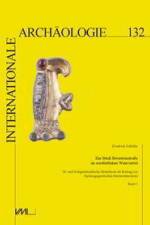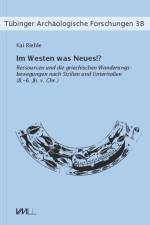von Matthias Joachim Bensch
69,80 €
Während im griechischen Kulturraum Heroenkulte florierten, spielten sie in Rom bekanntlich kaum eine Rolle. Der Topos von der "Mythenlosigkeit" Roms gilt grundsätzlich nach wie vor zu Recht als ein zentrales Paradigma römischer religionsgeschichtlicher Forschungen. Die Erzählungen von den exemplarischen Helden der republikanischen Zeit und auch die von den römischen Königen schließen teilweise diese Lücke. In Bildmedien sind allerdings einzig Romulus und Aeneas als Figuren, die in enger Verbindung zu Rom stehen, in nennenswertem Ausmaß präsent. Diverse klassifizierende Begrifflichkeiten, die einer antiken Terminologie entstammen, bieten zwar eine solide Basis, um sich ihrer Bedeutung zu nähern: beide sind reges (Könige), beide conditores (Städtegründer), Aeneas zudem ein trojanischer ¿¿¿¿ / heros (Heros), der schon in den homerischen Epen wichtig ist. Diese erfassen jedoch jeweils nur Teilaspekte ihrer Persönlichkeiten und helfen nicht dabei zu verstehen, welchen eigenen Beitrag Bilder zur Konstruktion dieser Figuren leisteten. Um dem beizukommen, wird das Heroische daher in der Arbeit aufbauend auf Überlegungen, die für die Erforschung desselben im SFB 948 zentral sind, verstanden als Ergebnis von gemeinschaftlichen Zuschreibungen an eine einzelne Heroische Figur". Diese ist also ein Produkt kommunikativer Prozesse und hat mit den essentialistischen Bestimmungen wie durch o.g. Benennungen nichts gemein. Untersucht werden im ersten, bildsemiotischen Teil der Studie, welche Qualitäten es denn sind, die dem Gründer Roms und dem Trojaexilanten vermittels der verschiedenen Ikonografien zugeschrieben werden. Im Mittelpunkt stehen dabei die bildlichen Konzeptionen des Augustusforums in Rom, weil diese jeweils sehr stark die weitere Überlieferung prägten. Die nicht mehr erhaltenen kolossalen Skulpturen zeigten Aeneas mit seinem Sohn Ascanius an der Hand und seinem Vater Anchises auf seiner Schulter und Romulus als Träger einer Trophäe, den spolia opima. Gefragt wird nach den Körperbildern, die für die beiden entworfen wurden, ferner danach, wie Objekte als Attribute sie auszeichnen. Sodann geht es um die Handlungsmotive, die dargeboten werden. Im anschließenden zweiten Teil rückt das Spektrum der Bildmedien und die Kommunikation mit ihnen in den Fokus. Ziel ist es zu ergründen, wie durch ein Handeln mit den Objekten als Bildträgern bestimmte Semantiken akzentuiert oder aber eher ausgeblendet werden. Zu den Medien, in welchen sich Bilder von Romulus und / oder Aeneas in relativ großer Zahl finden, gehören etwa statuarische Monumente, republikanische Münzen wie auch solche der sog. Reichsprägung und der Städteprägungen, Gemmen und Glaspasten und Tonlampen. Weiterhin werden archäologisch nachweisbare Verdichtungen von Heldenbildern in einzelnen geografischen Räumen dahingehend untersucht, ob sie tatsächlich von einer gemeinschaftlich getragenen Heraushebung der Heroischen Figur(en) zeugen. Gegenstand der Analyse sind hier die Bilder in der Stadt Rom, in Pompeji, in Südspanien, auf der Nordpeloponnes und in der Troas. Es zeigt sich insgesamt, dass eine Untersuchung der Konstruktionsprozesse der Figuren ein adäquates Mittel ist, um ganz wesentlich ergänzend zum Verständnis des Aeneas und des Romulus in den imperialen visuellen Kulturen und generell zum Heroischen daselbst beizutragen. Das Augustusforum wird in vielerlei Hinsicht als Schlüsselmonument begreifbar, welches bildliche Konzeptionen bot, durch die in der Tat ganz außerordentliche Qualitäten an die beiden herantragen wurden, und welches sie zudem in einer medialen Form vorführte und in Kommunikationszusammenhänge brachte, durch welche diese Semantiken sogar noch angereichert wurden. Die Arbeit lässt die differenzierten Aneignungen dieser Motive und der Figuren im Allgemeinen in bestimmten Medien und Kulturräumen als Prozesse erkenntlich werden, die oftmals ganz dezidiert in Auseinandersetzung mit den heroischen Semantiken geschahen. Und sie leistet schlussendlich auch einen Beitrag zur Erforschung politischer Kommunikation mit Heldengestalten, indem sie insbesondere beleuchtet, in welcher Weise sich Romulus und Aeneas für die religiöse und charismatische Fundierung des Prinzipats nutzbar machen ließen.





























